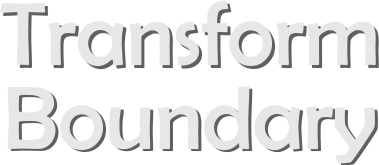
A Transform Boundary, also known as the Conservative Boundary, is created due to the action of two tectonic plates that slide past each other in sideways motion. It is also known as the Conservative Plate Boundary as these faults neither create nor destroy the Lithosphere. Its relative motion is mostly horizontal, in either sinistral or dextral direction. In simple words, Transform Boundaries are places where plates slide past each other. The boundaries lack spectacular features found at the Convergent and Divergent Boundaries since the plates on the either side merely slide past each other and not tear or crunch it. However, they are marked in places which have linear valleys where rock has been ground up by the sliding.
The offset of oceanic ridges by faults do not follow the classical pattern of an offset fence or geological marker was well recognized by John Tuzo Wilson in Reid’s rebound theory of faulting. According to the theory, these transform faults produce slip in the opposite direction. The distance between the ridges does not increase because of this slip it separates. As the ridges are spreading centres, this distance remains constant. However, this theory was confirmed when the transform faults were shown pointing in the opposite direction in comparison to the classical interpretation.
The landforms are:
- Fault Lines: It is one of the primary landforms produced by the Transform Boundary. They are typically also known as ‘strike-strip faults’. Pressure is built on these faults as the friction prevents them from sliding. The faults violently slip when the pressure exceeds the force of the friction. This violent slip leads to earthquakes. One such example is the San Andreas Fault in California.
- Oceanic Fracture Zones: The Transform Boundaries that lie on the seafloor are the oceanic fracture zones which form valleys or trenches. They connect and spread to the oceanic ridges and extend from about 160 km to more than 1,609 km. Its prime examples are the Clarion, Molokai and Pioneer fracture zones which are located off the West Coast of California and Mexico.
Generally, faults are caused by compression, extension, or lateral stress in the rock layers, the effect of which is to relieve strain. The Transform Faults transport the strain between ridges or subduction zones and specifically relieves strain.
The length of the Transform Faults is determined on the type of faults or tectonic structures that connects with it. Hence, types of Transform Faults are as follows:
- Growing Length Faults: The Transform Fault itself grows in length in situations where a transform fault links together a spreading centre and the upper block of a subduction zone or when two upper blocks of those zones are linked.

- Constant Length Faults: The Transform Fault remains constant in many other cases due to different reasons. It is caused by the continuous growth by both the ridges outward in case of ridge-to-ridge transforms, avoiding any change in length. However, when a ridge is linked to a subducting plate, the opposite occurs.

- Decreasing Length Faults: Transform Faults may also shrink in length. This happens in rare cases when two descending subduction plates are linked. The Transform Fault decreases in length as the plates are subducted until it disappears completely, leaving the zones in opposite directions.

One of the most famous Transform Boundary is the San Andreas Fault. It is a continental fault extending through California in the United States. Its motion is right-lateral strike-slip and it forms the tectonic boundary between the Pacific Plate and the North American Plate.



